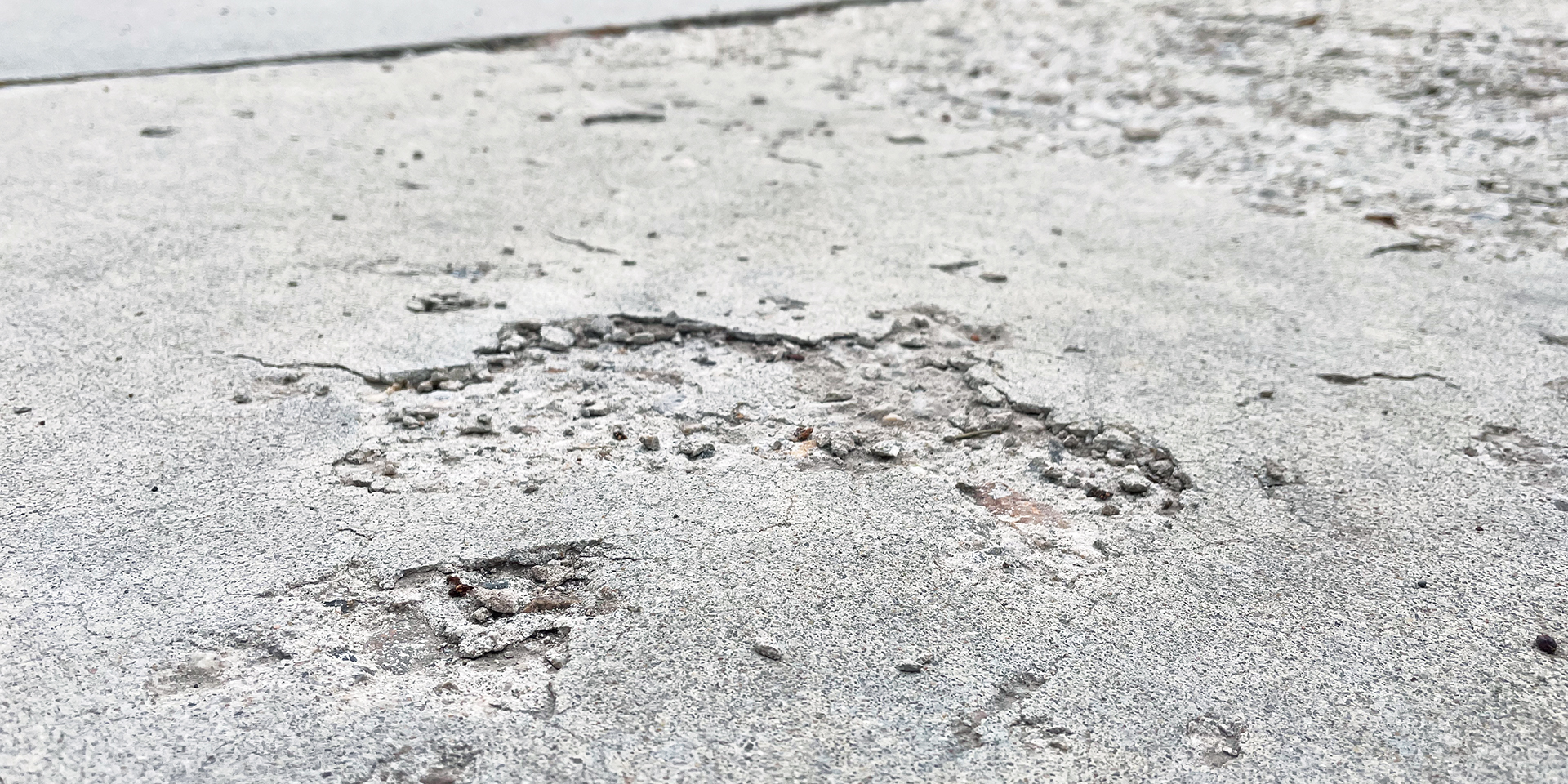Stop Freeze Thaw Damage
If you don’t know what freeze thaw damage in concrete is and you live in the northern part of the US, then here’s a quick lesson for you. The freeze thaw cycle in concrete can damage your concrete driveway, patio, or any other exterior slab. Water soaks into the concrete and when it freezes it expands, which causes cracking and spalling (chips and divots). I’ll explain more below. But the real question is… how do you stop freeze thaw damage and protect your concrete?
What Is The Freeze Thaw Cycle?
The freeze thaw cycle is when water / moisture penetrates into a concrete slab. When the temperature dips below freezing the water in the substrate expands. This causes cracking, chipping, and divots to appear in the concrete. If left unaddressed, the concrete will continue to deteriorate until the slab needs to be demoed and replaced. Demolition and re-pouring can cost thousands if not tens of thousands of dollars.
Here’s a more in depth description of the process. Freeze thaw damage happens when water soaks into the voids of a concrete slab. When it freezes, the volume of frozen water is 9% greater than liquid water. Therefore when water freezes pressure is exerted on the surrounding concrete. When this pressure exceeds the tensile strength of the material, it starts to crack. Year after year the voids are enlarged, which enables the accumulation of additional water during the next thaw, and the damage is magnified. Each freeze thaw cycle results in additional cracking. Substantial damage can occur over subsequent freeze-thaw cycles
Salts from deicing products can also deteriorate the concrete during the winter months. These are commonly used to melt the ice and snow on your exterior hard surfaces.
Solutions
Luckily there’s a low cost solution to these problems. The freeze thaw cycle can be prevented by applying a deep penetrating sealer to the concrete. My personal favorite ( which I use for many clients each year ) is Extreme Penetrating Sealer. This particular sealer soaks deep into the slab and while it cures it crystallizes through the substrate. These crystals fill in the voids that the moisture would soak into. This also helps to increase the density and strength of the concrete.
Unlike most other penetrating sealers on the market, Extreme Penetrating Sealer permanently waterproofs the concrete. This means that you only have to apply it once, not over and over again every couple of years. This product allows me to offer a permanent solution for my clients which is great!
After the concrete is sealed, ice removal is much easier. The water doesn’t soak into the slab which increases the bond of the ice to the concrete. It’s sitting on top of the concrete. Therefore when you hit the ice with a snow shovel it just pops right off of the concrete, making it really easy to remove. This is a great benefit for safety reasons during the winter months.
This sealer also protects the concrete from salt damage. I still recommend that my clients use a non-calcium chloride deicer. That said, salt based deicers can be used with greatly reduced effects to the substrate.
In conclusion, if you want to protect your concrete investments from deteriorating every winter, I highly recommend sealing them with Extreme Penetrating Sealer. It’s an extremely cheap investment compared to demolition and re-pouring. It’s also super easy to apply. It can be done by practically anyone as a do-it-yourself (DIY) project. Here’s a video tutorial to show you the process.
Video Tutorial
Featured Product
The only real drawback is that the sealer has to be applied in temperatures of 50º or higher. That means NO applications during the winter. You’ll have to plan ahead and apply Extreme Penetrating Sealer in the spring, summer, or fall, before the snow starts a coming!
Additional Information
I’ve linked to an informational pdf from the NIH describing the freeze thaw cycle below. I’ve also linked to my favorite non-calcium chloride deicer below.








